Some of the world’s tastiest fruits can be found in Mexico. There is an abundance of diversity, including avocado, mango, and prickly pear. Mexico has an assortment of temperature zones, from its desert landscape to its tropical forest, which enables a vast variety of plant life to grow.
This beautiful country has an extensive range of fruits, many of which you could be accustomed to and others you may have never even heard of! The following piece will focus on the flavor, texture, and nutrition of 15 native fruits of Mexico. If you’re curious about Mexican fruits or just wish to try a new dish, continue reading.
Black Sapote
Eastern Mexico is the home of black sapote. Most likely, this is the original Aztec tzapotl. Among the persimmon species is the black sapote. The tree was initially only found in Mexico and Central America, but it has now spread to other parts of the world.
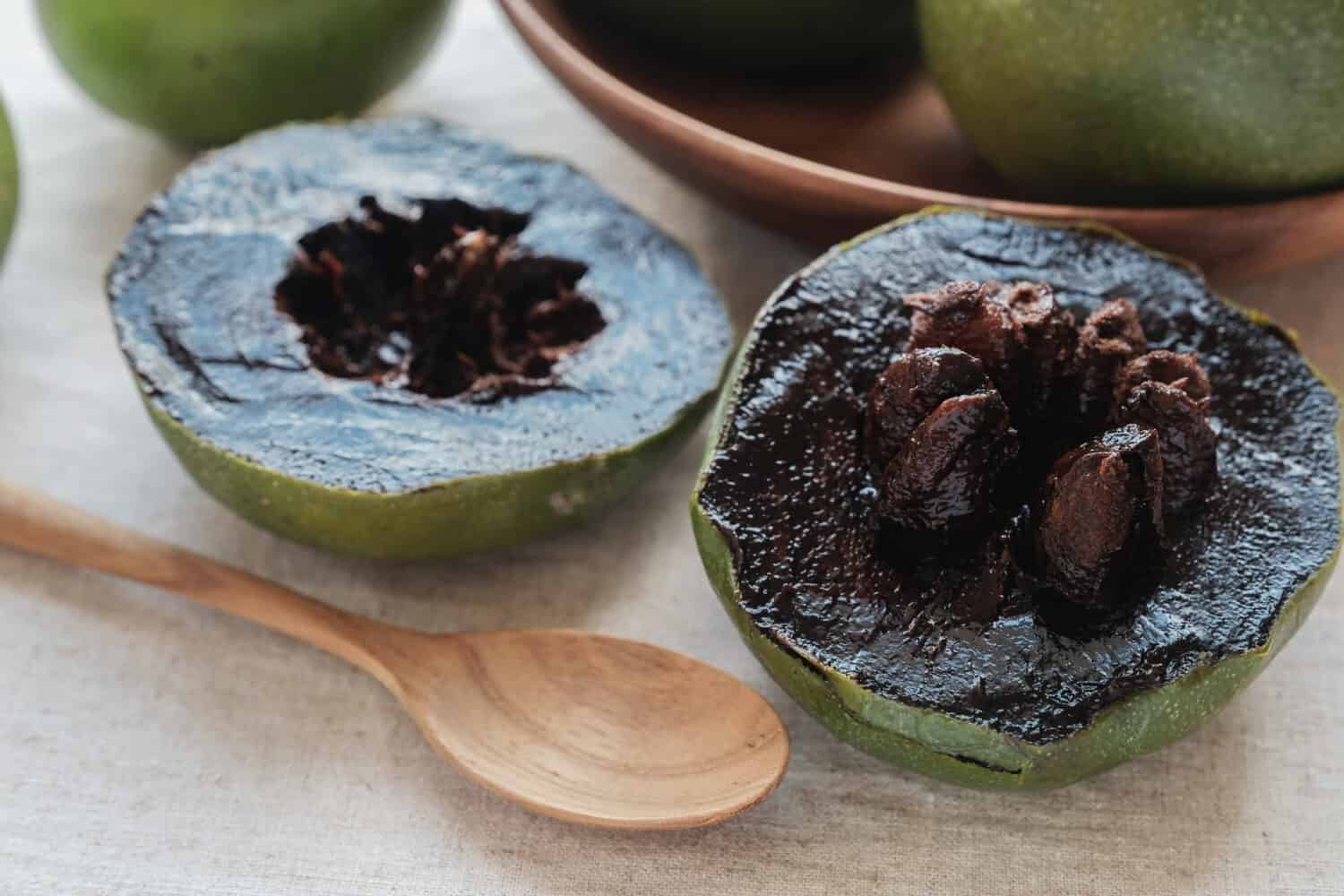
©SewCreamStudio/Shutterstock.com
The fruit’s flesh is black or dark brown and has a thick, yet creamy consistency. Some people have compared the flavor of black sapote to that of chocolate mousse. Other names for the black sapote include marmalade plum, chocolate persimmon, and chocolate pudding fruit.
Mamey
Mamey, a variation of sapote, is native to Mexico but is also found elsewhere in Latin America. The flavor has been compared by some to pumpkin pie. It combines peach and pumpkin flavors with nutmeg and vanilla undertones.
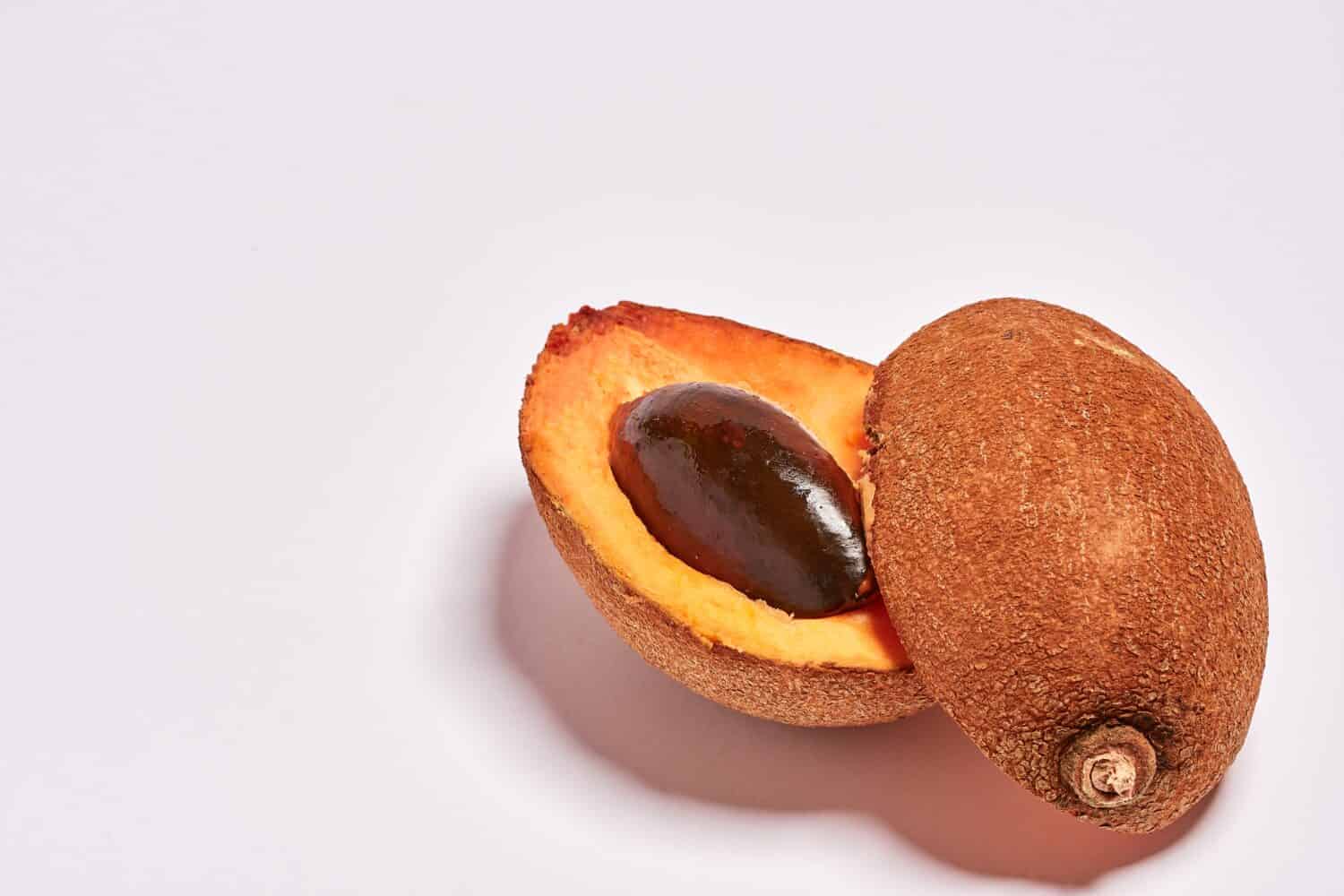
©OAXE/Shutterstock.com
It has an oval form, and tough brown skin, but smooth, vibrant orange meat. To consume it, split the mamey in half, take out the seeds, and use a spoon to get out the pulp. Although it tastes great fresh, it also makes excellent ice cream and pastries.
Rambutan
Rambutan is native to Mexico and Southeast Asia. The ping pong ball-sized fruit, known as a rambutan, is named after the Malay word for hair since its red and green shell is covered in hairs. Its distinctive look is frequently contrasted with that of a sea urchin.
When split, the fruit resembles the lychee and longan fruits. Its creamy, delicious flesh is translucent white and features a seed in the center. As someone who’s tasted this fruit many times, it’s comparable to that of a grape.
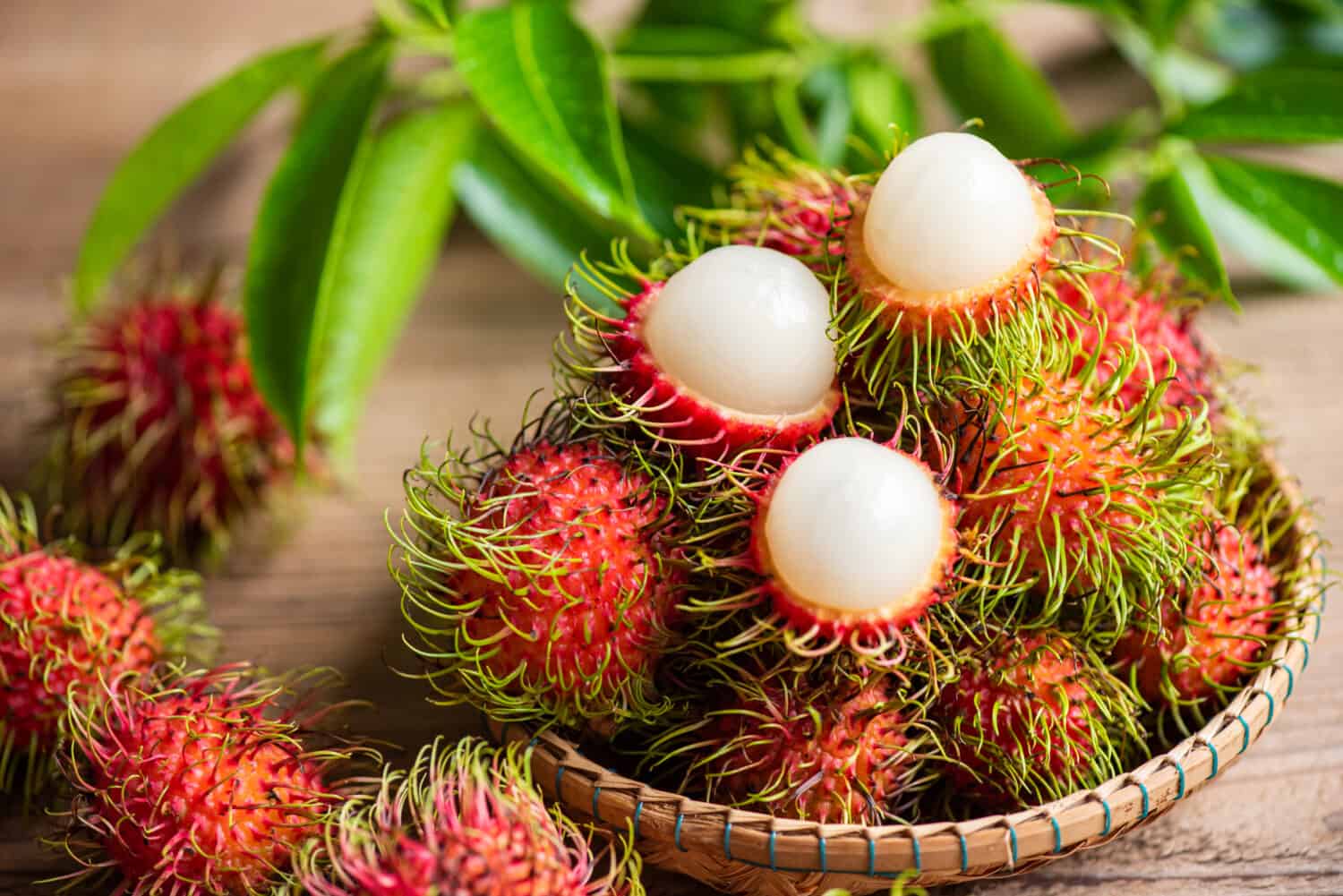
©Bigc Studio/Shutterstock.com
The health advantages of rambutan may include improved digestion, weight loss, and enhanced immunity against infections. Rambutan is also very nourishing.
Prickly pear
Prickly pears, commonly known in Mexico as tuna, have a sweet and exceptionally pleasant watermelon-like flavor. The prickly pear cactus, which is found in the Mexican desert, is harvested for its fruit.
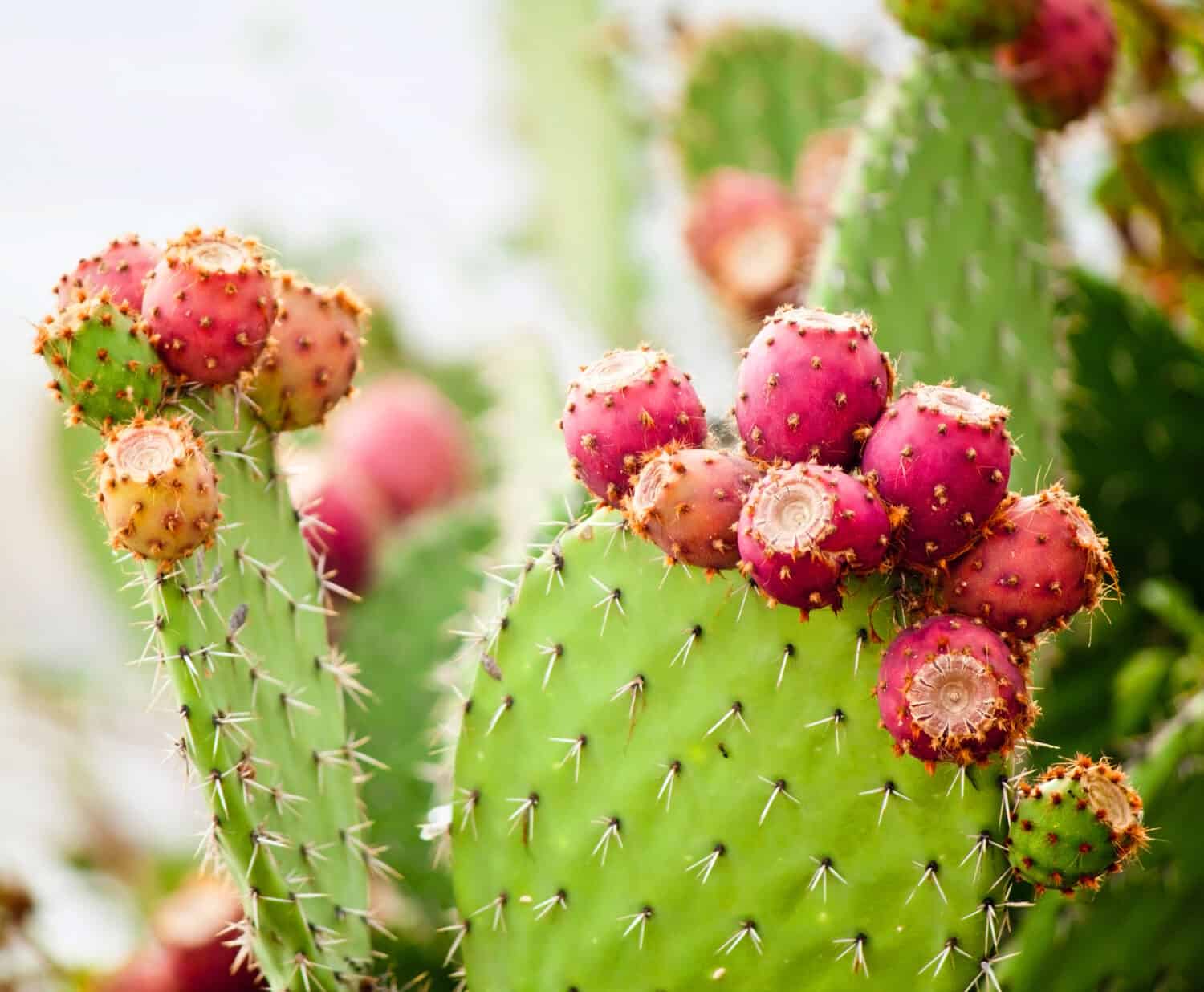
©fischers/Shutterstock.com
The fruit is typically eaten cold by locals. According to the particular variety and the time of year, they are gathered, they come in a variety of hues and sweetness amounts. Its texture is comparable to that of pitaya or kiwi, and its mild, moist sweetness makes it a great addition to jams, dressings, drinks, and desserts, or just by itself.
Papaya
The papaya, which was formerly an uncommon and exotic fruit, is now found at most grocery stores throughout the majority of the year. Papayas, commonly referred to as papaws or pawpaws, contain a variety of minerals, including potassium and antioxidants.
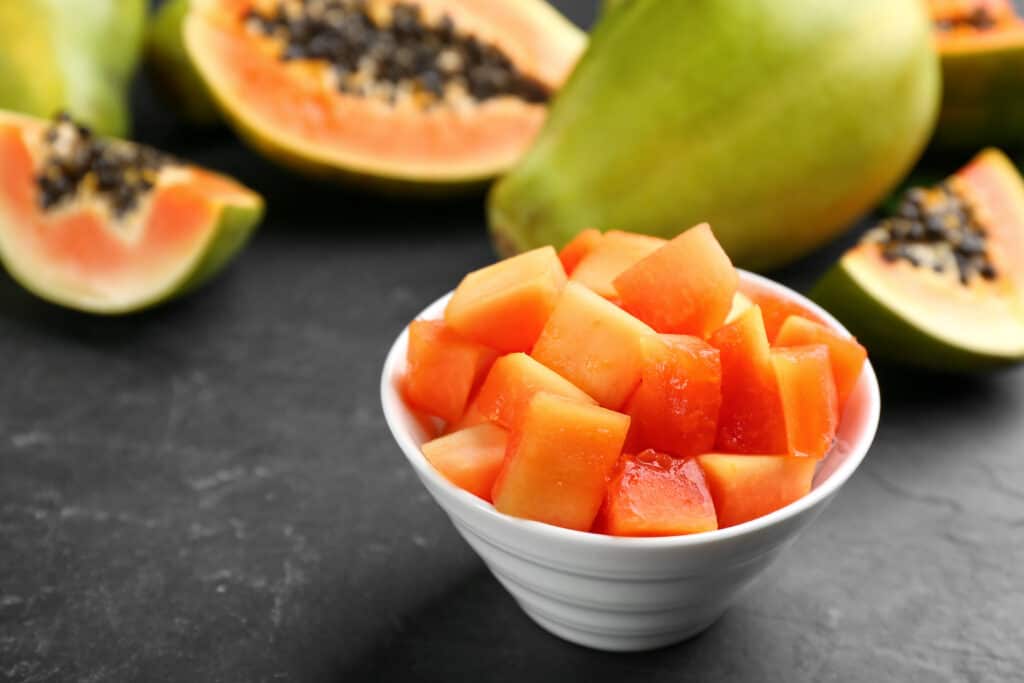
©New Africa/Shutterstock.com
This fruit is soft and fleshy, with a wide range of culinary applications. A single medium-sized papaya, a great source of vitamin C, has 224% of the daily required amount. Opt for fresh papayas with reddish-orange skin that are tender to the touch.
Simply split it in half like a melon, remove the seeds, and eat. Although papaya seeds can be eaten, they have an acidic, peppery flavor.
Cherimoya
Green fruit with a cone-like shape known as a cherimoya has a leathery exterior and delicious velvety flesh. Cherimoya is sometimes referred to as custard apple because of its creamy texture.
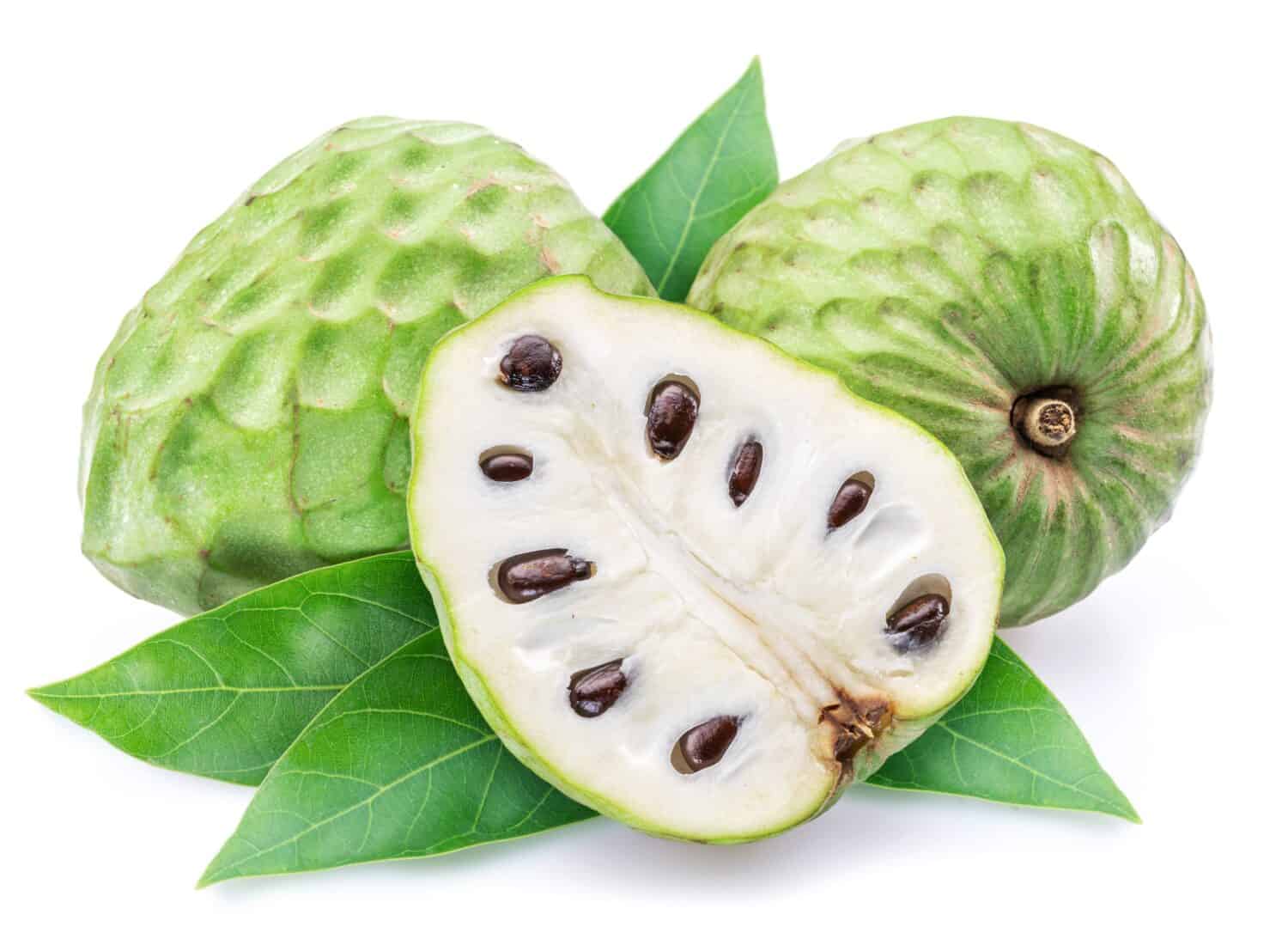
©Valentyn Volkov/Shutterstock.com
It’s frequently served cold, like custard, and eaten with a spoon. Cherimoyas have a sweet flavor akin to other tropical fruits like mango and papaya. This unusual fruit’s high fiber, vitamin, and mineral content may help with the immune system, decrease inflammation, and promote eye and heart health.
However, if you take large amounts of specific cherimoya pieces, they might include toxins that can harm your nervous system.
Avocado
Mexico’s national fruit is avocado. They have a soft hole in the middle and an olive-colored exterior with bright green flesh inside. Mexico and Central America are where avocados first appeared. They may, however, be cultivated all over the world, even in North America.
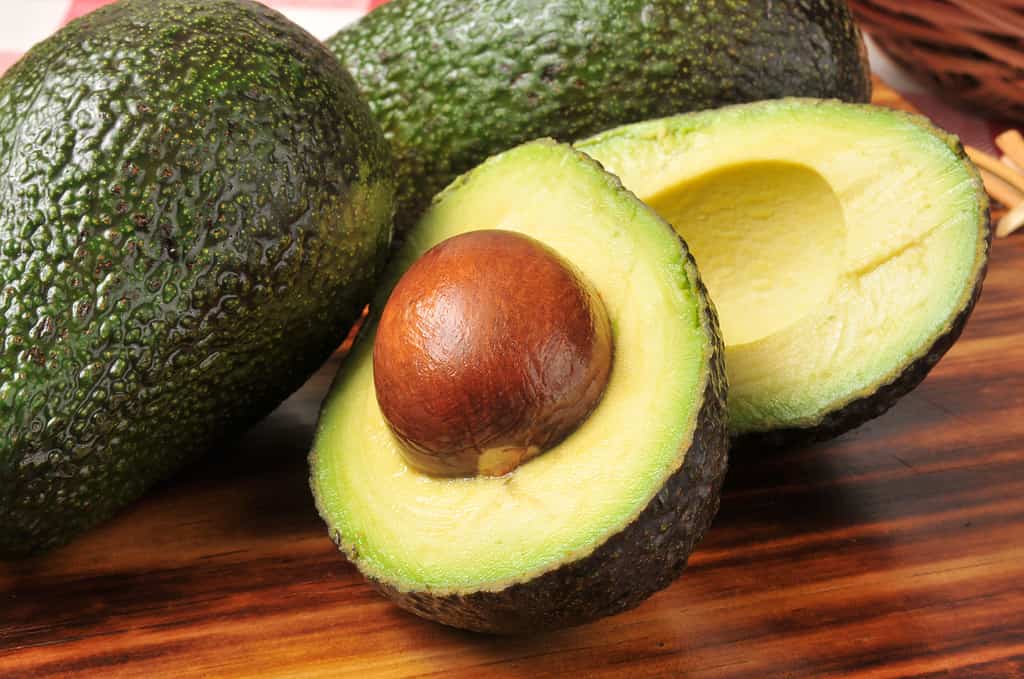
©MSPhotographic/Shutterstock.com
They can be found in many different foods, including guacamole, slaw, tacos, and even smoothies. Due to their abundance of nutrients and beneficial fats, avocados are a favorite among those trying to eat healthy.
Pomegranate
The Spanish introduced pomegranates to Mexico, where they are currently widely grown. This juicy fruit is high in fiber, vitamins, and minerals but low in fat and calorie content.
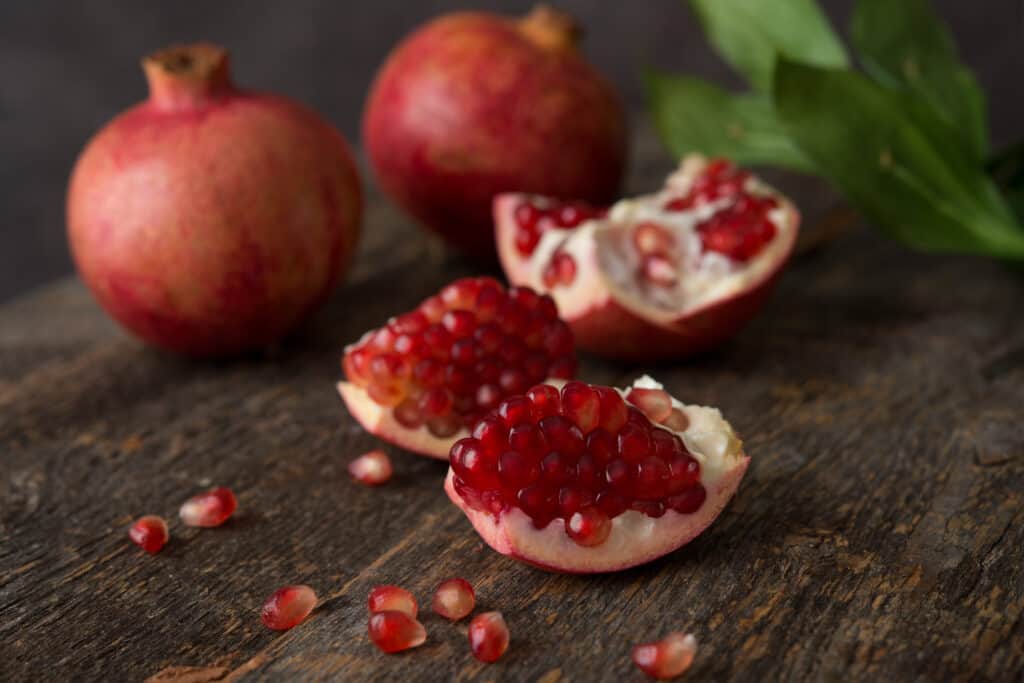
©Gorenkova Evgenija/Shutterstock.com
The advantages of eating pomegranate include antioxidants, cardiovascular wellness, urinary health, physical stamina, and more. The flesh of this fruit is a bitter, white substance. Within the walls are seemingly endless amounts of arils. These are tasty edible seeds that are crisp and delicious.
These unusual fruits have plenty more to offer than just the vividly colored juice they frequently appear in.
Lulo
Lulo (naranjilla) is Spanish for “little orange.” These Mexican fruits typically have orange-shiny skin, and their juice has a zesty flavor that might remind you of tart rhubarb or bitter citrus.
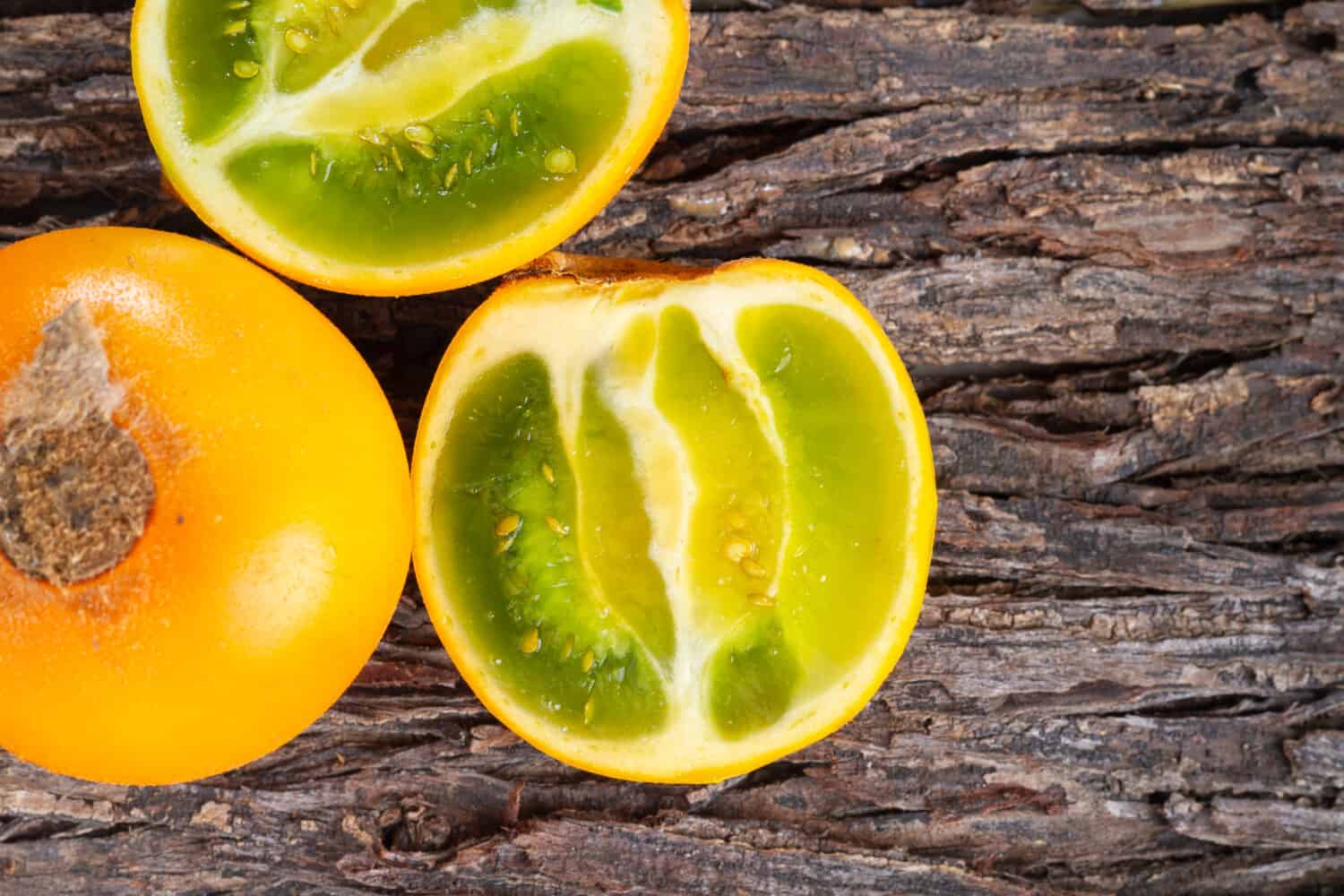
©Alexander Ruiz Acevedo/Shutterstock.com
Four different membranes loaded with green pulp and seeds can be seen when a lulo is cut open. Most commonly, lulo is taken as a juice known as lulada. When it’s hot, it’s excellent for satisfying your thirst.
Mexican Plum
Plums are small, yet tasty and refreshing fruit that is native to Mexico. A cylindrical, oval, cordate shape with a distinct suture line running from the chamber of the stem to the base characterizes plums.
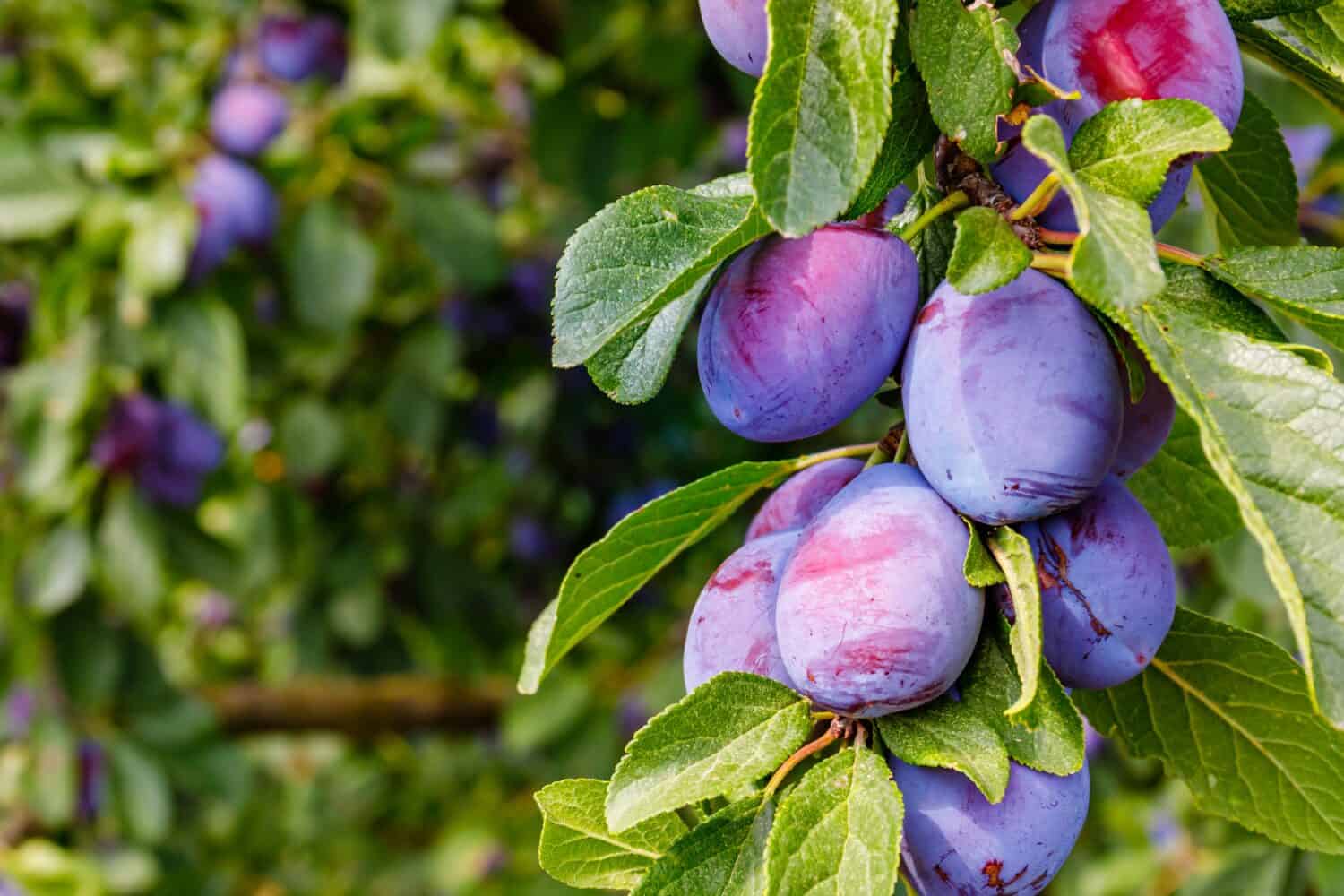
©nnattalli/Shutterstock.com
This fruit is small to medium-sized stone fruit with an average diameter of close to three inches. Based on the variation, the fruit’s skin can be dark purple, nearly black, ruby red, vibrant green, or golden yellow in color.
It is also thin, taut, silky, and sensitive, bruising quickly. Plums are a flexible food element that works well in fresh, cooked, and frozen dishes.
Mexican Guava
Mexico’s native guavas, also known as guayabas, are substantially larger than common guavas and can reach baseball-sized sizes. Their flesh can range from rosy to white, based on the variety.
The exteriors of this fruit are lime green or occasionally yellow. Mexican cream guavas have creamy white flesh and intense sweetness. You’ll enjoy Mexican guavas if you enjoy pineapple and passion fruit.
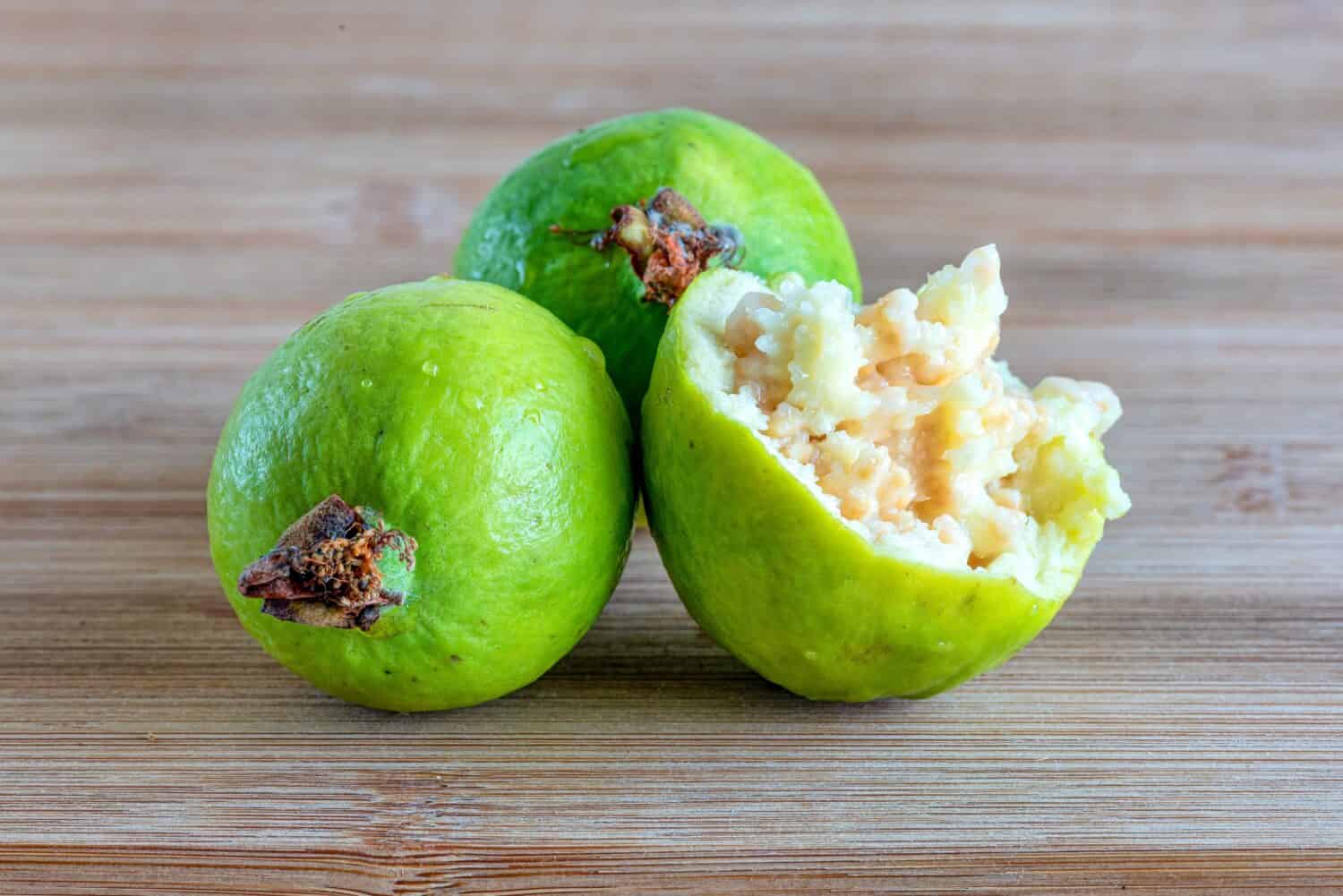
©BobNoah/Shutterstock.com
Squeezing ripe guava with your fingertips reveals its softness and suppleness. The scent is another sign that guava is ripe. You should be able to detect its musky, sweet aroma before even bringing the fruit to your nose.
Dragonfruit
The Mexican dragon fruit, commonly known as pitaya, sometimes written “pitahaya,” comes in a wide range of hues. While yellow dragonfruit is deliciously sweet, pink dragonfruit has a more subdued flavor.
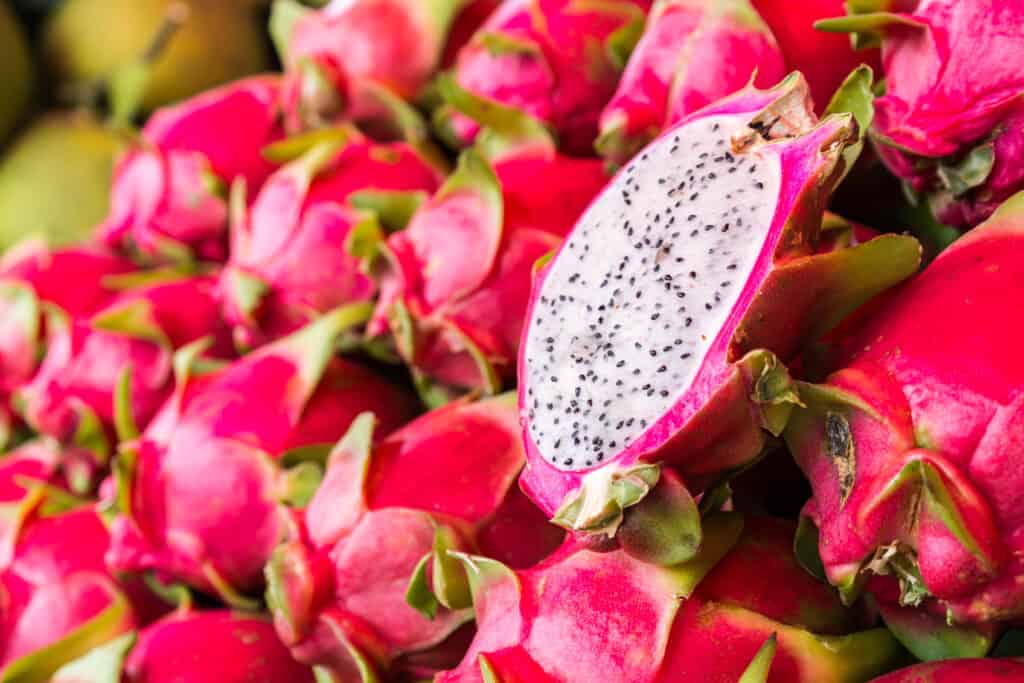
©Pitchayarat Chootai/Shutterstock.com
Pitayas are a type of cactus that are around the size of a baseball. It is also sometimes referred to as “strawberry pear” since some dragonfruit has hot pink exterior skin. Mexican dragon fruit has white flesh and small black seeds.
These seeds are renowned for providing significant relief for constipation sufferers.
Tomatillo
The tomatillo, also known as the green tomato in Mexico, is a key ingredient in the country’s well-known dressings. It’s eaten both cooked and raw, depending on the dish. Tomatillos can be pureed sans any kind of liquid due to their high water content.
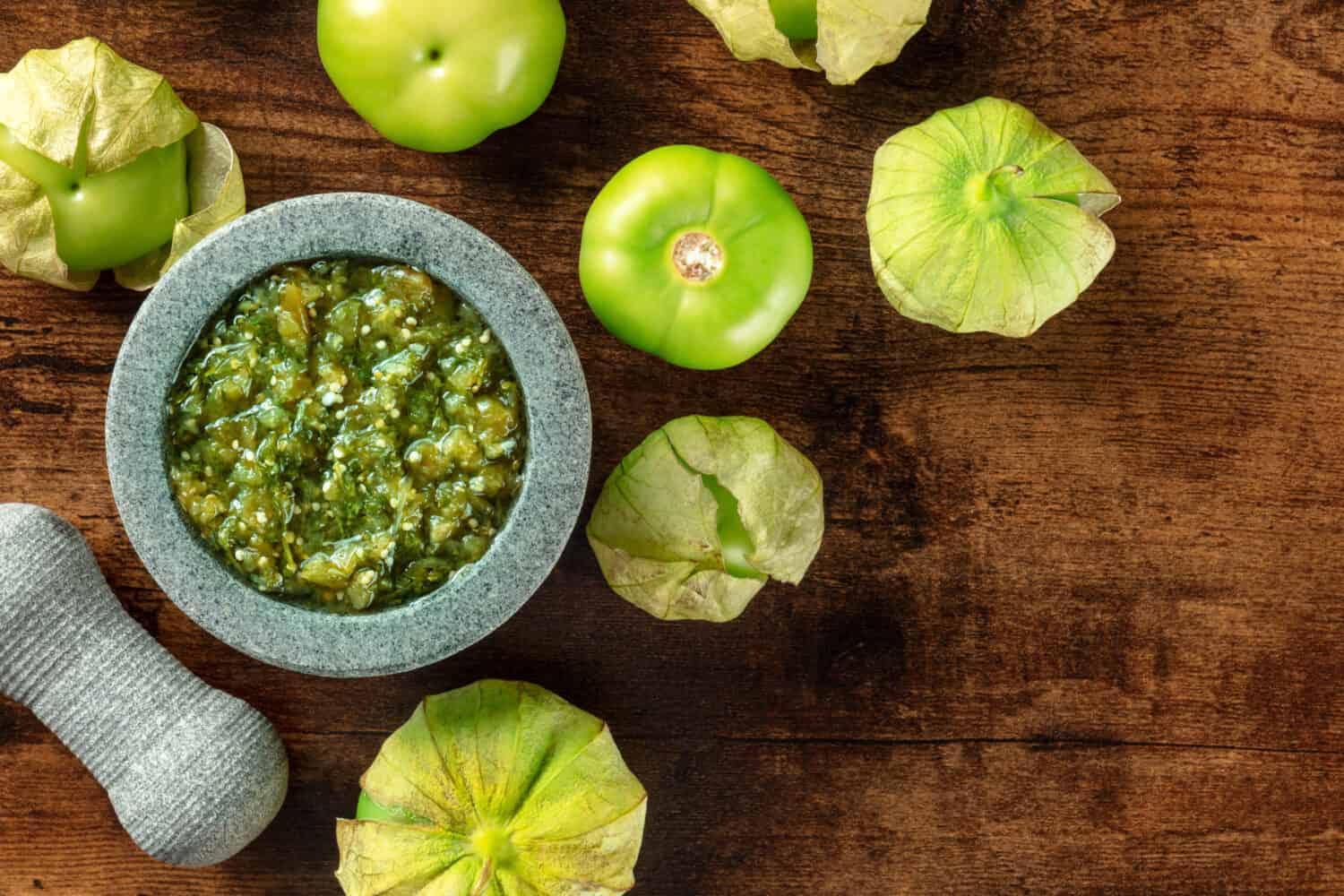
©Plateresca/Shutterstock.com
Once blended, this fruit can be seasoned with chiles, salt, garlic, and occasionally avocado to create a flavorful dish. Although they belong to the nightshade family and have a flavor that is noticeably spicier than a conventional tomato, these are not tomatoes.
Tomatillos have tiny, light green husks that must be discarded before consuming and the fruit inside is frequently gooey with sap.
Nance
The Nanche fruit, which is normally available in Mexican markets from August to September, is frequently consumed raw or cooked as a dessert. Its normally golden, thin body surrounds a creamy white pulp. The tropical nance fruit has a distinct flavor and aroma and resembles a cherry in appearance.
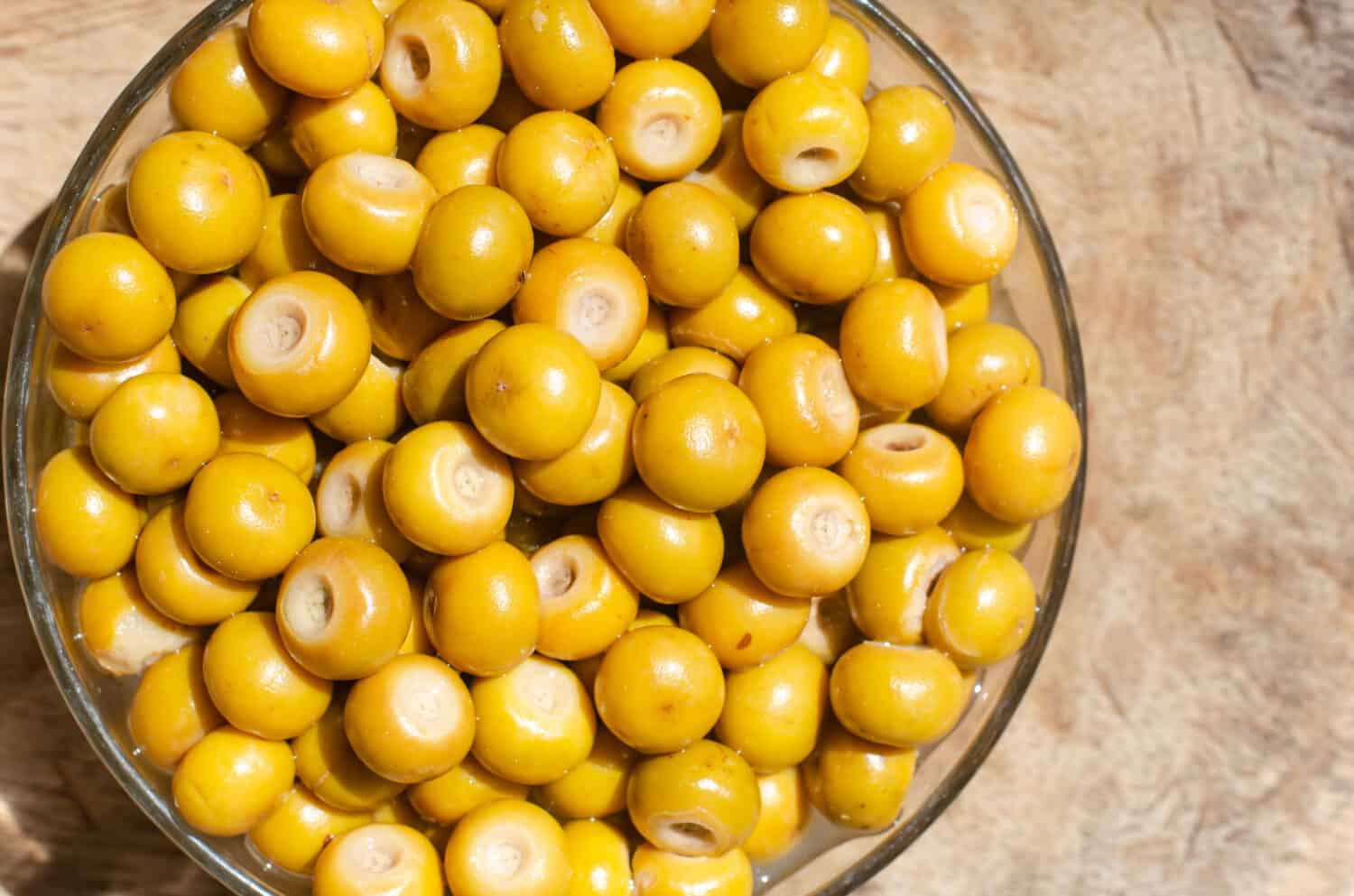
©Mabelin Santos/Shutterstock.com
It has an odor that can be detected, and its sweet, peculiar flavor can range from being a little cheese-like to tasting distinctively like a blend of banana, lychee, and pear. One sizable pit, containing a maximum of three inedible white seeds, is present in its oily white flesh.
Sapodilla
Last but not least, sapodilla is a tasty fruit that is native to Mexico. It is also known as naseberry or chicle. This fruit exists in the wild on the Yucatán coast. The sapodilla has a distinct flavor all its own, making it a fantastic introduction to other sapote fruits we’ve mentioned.
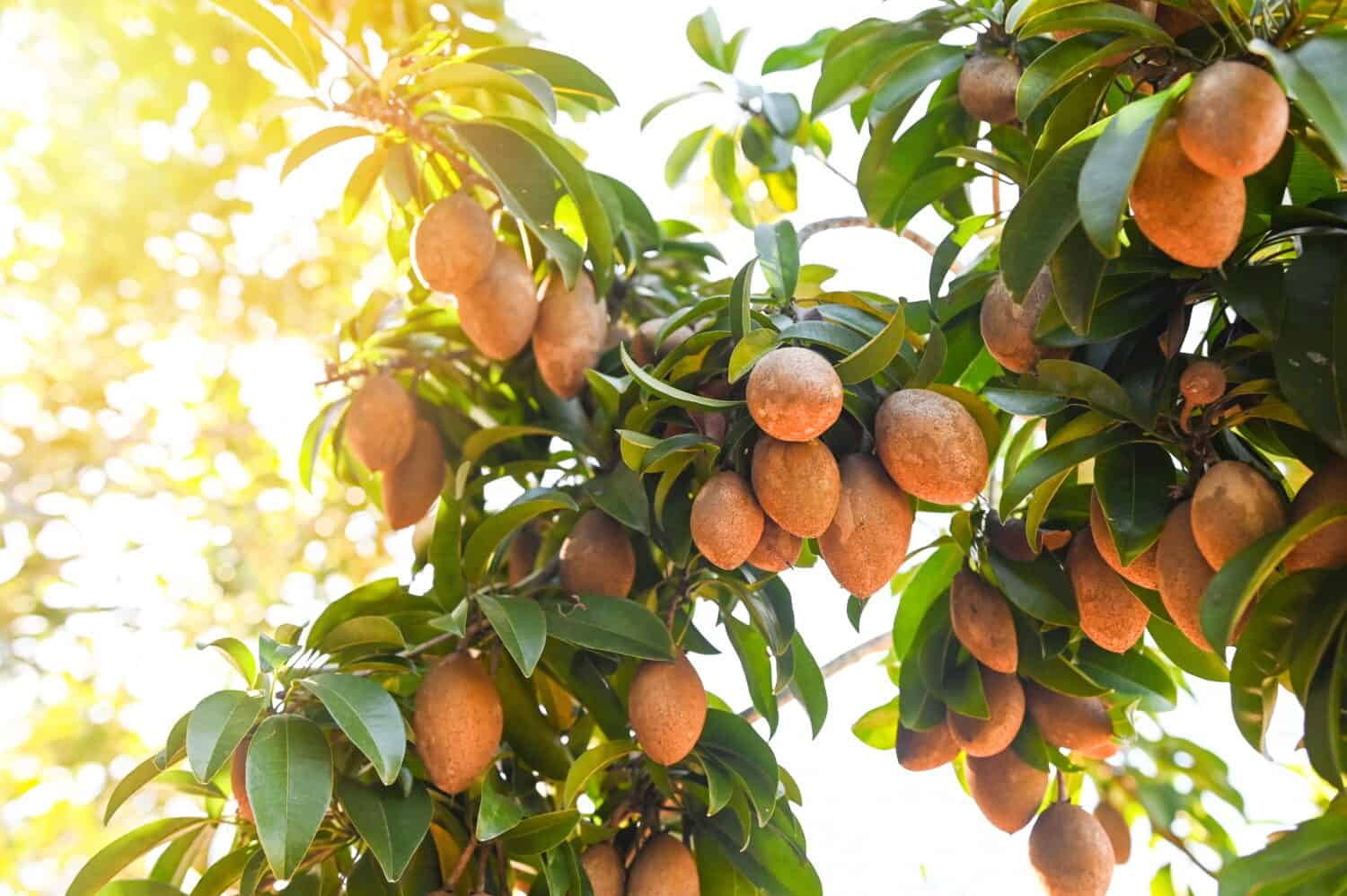
©Bigc Studio/Shutterstock.com
This one has a strong brown sugar, sweet potato, and pear flavor. Additionally, they have a pearl-like texture and a flavor that is frequently referred to as “malty” and rich in molasses.
It is not ripe if the skin beneath is green. When it’s ready to be eaten, it is brown and just a little squishy. The flesh of a sapodilla fruit is often removed by cutting it in half and scooping it out with a spoon.
The post 15 Delicious Fruits Native to Mexico appeared first on AZ Animals.
from Animal News, Facts, Rankings, and More! - AZ Animals https://ift.tt/LeJMGay